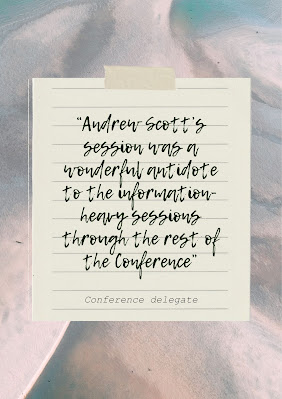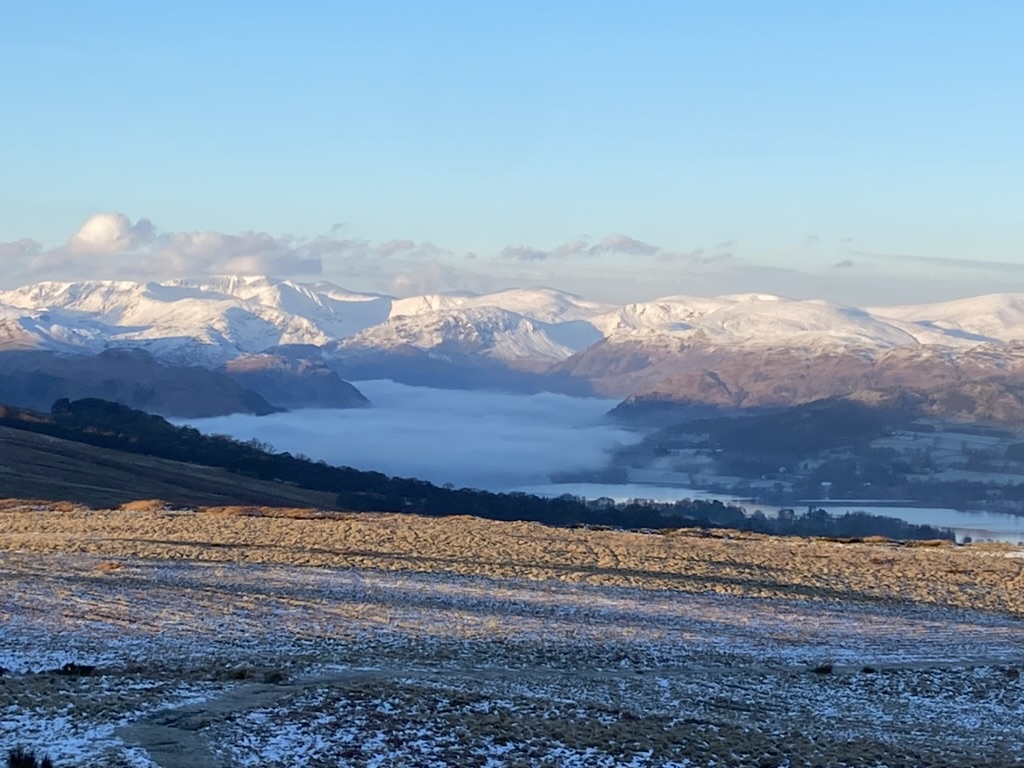Every now and then, I get invited to do sessions at conferences (not keynotes - I am not a thought-leader, apparently - but breakout workshops). I always find this an entertaining process, from the initial request from the organisers to have my slide deck well in advance - and their bafflement when I tell them I won't be using slides - to the look of shock on participants'
faces when they turn up for my session to find that they will be sitting in a circle without a table to hide behind.And then I get asked back; probably because the organisers get feedback like this:
“Andrew Scott's session was a wonderful antidote to the information-heavy sessions through the rest of the conference. It slowed folks down and created space for deep, meaningful conversations. I'd suggest handing over some time in the programme for all delegates to have that 'Time to Think' together, deeply and meaningfully.”
So what do I do that is so different? The short answer is that I run my workshops as Thinking Environments (qv).
The longer answer follows, in case you are interested (if not, leave now: I won't be offended - my ego-needs are met in other ways - which might also be a clue about why people like my sessions...)
I always start with welcoming the participants, appreciating them for choosing to come to my workshop, and reminding them of the purpose of the session (which is always along the lines of 'to give you the time and opportunity to think with colleagues, about...')
We then do an opening round (at least one, sometimes more) so that everyone has the opportunity to be heard early in the session, and also to practice listening with complete attention, to everyone else in the room. I give the briefest of explanations about the why and the how of this, and we dive in. It always lands well, and signals that this is going to be different...
I then give them a brief overview, framework or perspective on whatever the session is about (the most recent one I did was on William Bridges' model of change and transition, which is excellent). My intention here is to give them something valuable that they will easily be able to recall, and also enough stimulation to have an engaged conversation with other participants about the topic.
Then I explain a little about how we will work throughout the session. This is a lightning introduction to the Thinking Environment and some of the key components: Attention, Equality, Ease and Appreciation. I try to get through all of that in less than 50% of the time available for my session; the rest is dedicated to their thinking together in small groups (using rounds and then open discussion, but always with exquisite attention and a complete ban on interrupting!). We conclude with a couple of rounds: one on their freshest thinking about the topic, and the final one on what they have appreciated about working together in this session.
And the feedback at that stage is often very similar to the comment quoted above. I was particularly amused recently when someone said how great it had been to have no input from the speaker, but rather the chance to think for themselves. They certainly had that (and I was gratified that it was appreciated) but I had also given them a 15' mini-input on Bridges' model to seed that conversation. But what I was hearing, of course, was the impact of the session being run in such an unorthodox way.




No comments:
Post a Comment